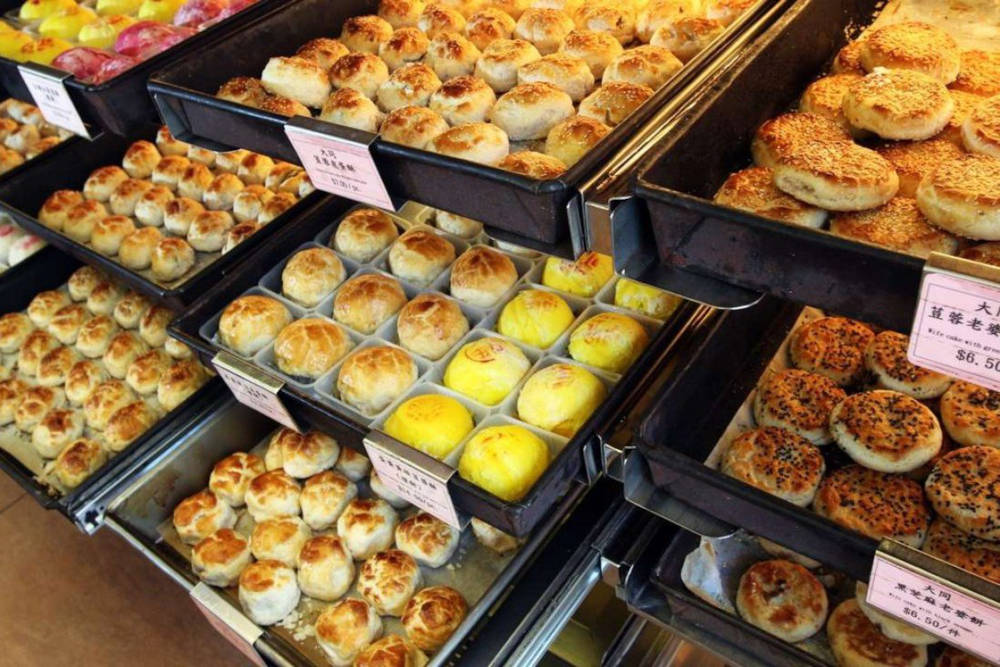Hong Kong’s food culture shows a mixture of influences from around the world. Indeed, the city is known as the “pearl of the East” for its eastern Chinese and western British cultural origins. This creates a diverse background of culinary creations. Here, we highlight this background in the baking arts. These ten classic pastries allow you to take a glimpse of true Hong Kong specialties.
Hong Kong has been recognized as a gastronomical hub worldwide from its colonial period until now. These unique pastries are a special representation of the traditional, modern, creative and rich aspects of our foodie scene which enjoys distinction in the world.
Egg tart (蛋撻)
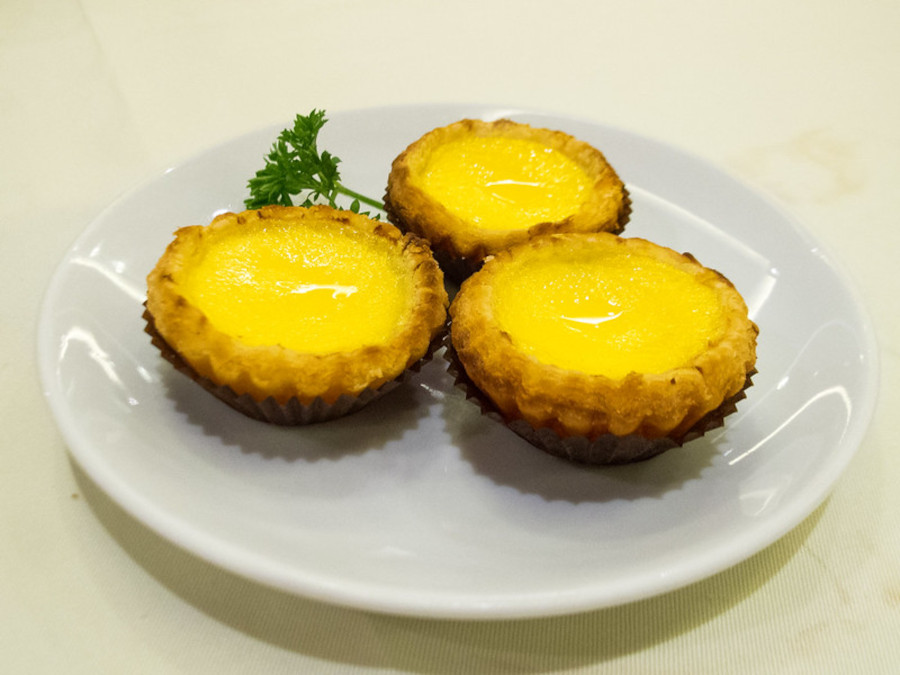
Egg custard tarts (pronounced dan tat) originated from the United Kingdom and were first introduced in Hong Kong after World War II during the colonial period. They were originally baked in oval moulds, but these changed to circular flower-like moulds in 1930. Egg tarts are made with cake flour, egg mixture, butter, sugar, and salt. Milk is added in some recipes to create a sweet, creamy textured filling. The dough gets rolled out, flattened, placed in the moulds, and then filled with the custard to bake in the oven till golden yellow.
Pineapple bun (菠蘿包)
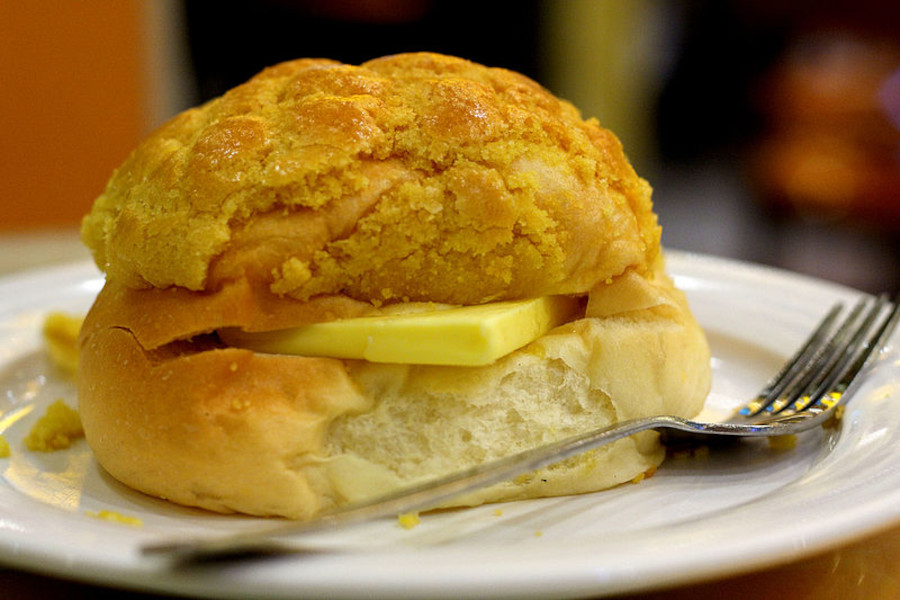
Pineapple buns (pronounced bolo bao) get their name from their crowning sugary cross-square pattern which looks similar to a pineapple; they do not contain pineapple. The bread is made with flour, sugar, egg, salt, yeast, milk, and butter. The topping layer has similar ingredients but replaces yeast with baking powder. These mildy sweet pastries have a crunchy, fluffy top with a soft bun base. Bolo yau (菠蘿油), which translates to pineapple oil, is a variation that contains a piece of sliced butter in the centre.
Wife cake (老婆餅)
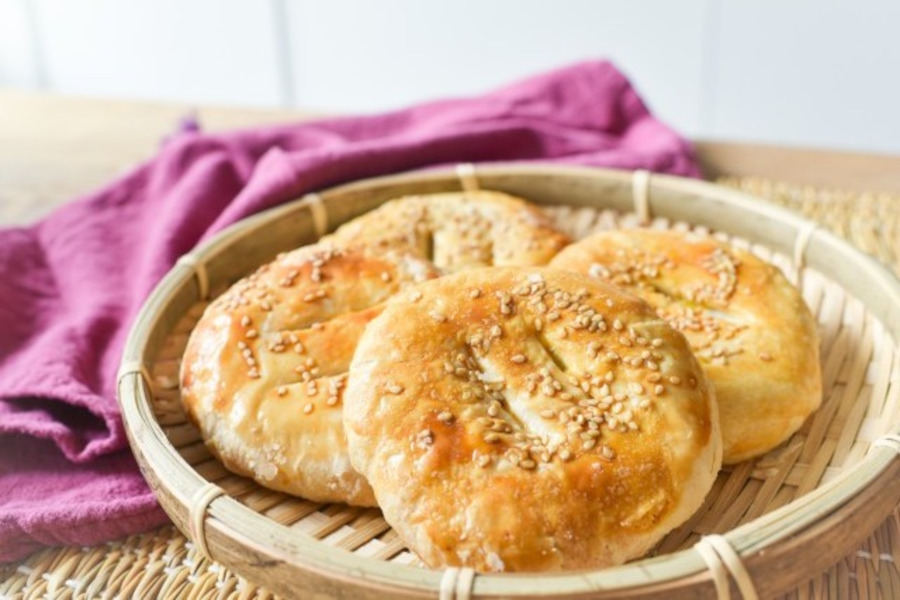
Wife cakes (pronounced lou po beng) are a traditional thin crust pastry made by mixing water, sugar, lard, and sticky rice powder, with a winter melon paste filling inside. A piece of flattened dough is brushed with egg and baked in the oven until golden brown. There are some fun legends to this pastry, but they revolve around the central theme of a husband and wife supporting each other and showing their appreciation by baking these cakes for the other. Wife cakes are more commonly eaten compared to their savoury counterpart husband cakes (老公餅, pronounced lou gung beng). These are instead made with minced meat, garlic, salt, and salty egg yolk. Together, the pair of pastries are known as sweetheart cakes.
Almond biscuit (杏仁酥)
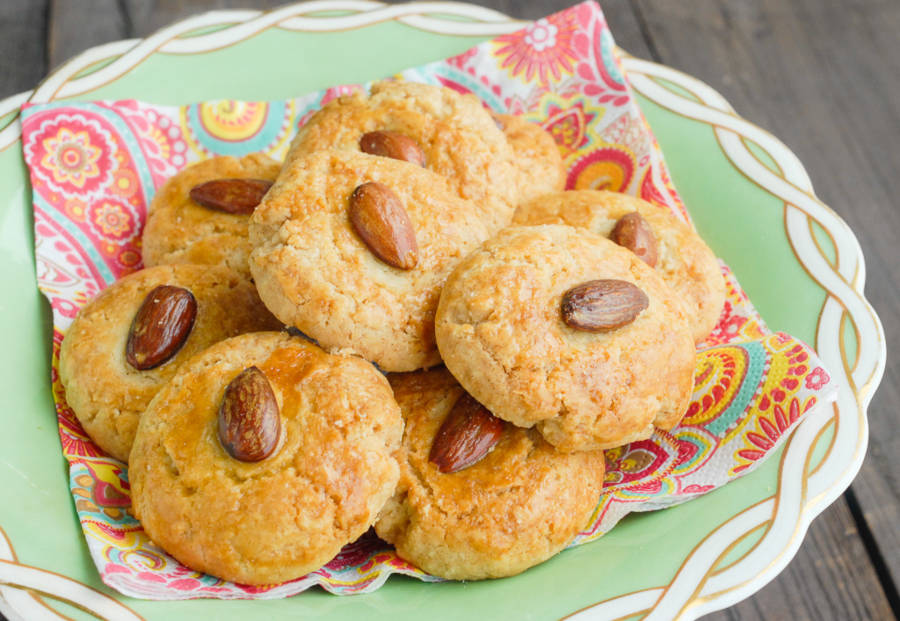
Traditional almond biscuits are crumbly and mellow, and mainly differ from western almond cookies in their use of lard instead of butter. The ingredients are flour, icing sugar, baking soda, baking powder, egg yolk, melted lard, almond extract, and almonds. To form an almond biscuit, flour is sifted and combined with the rest of the dry ingredients, combined with egg yolk and lard, and then rolled out into cookies that fit into your palm. These are topped with an almond as a garnish and then baked in the oven until aromatic – a great healthy treat with a satisfying crumbling bite.
Walnut biscuit (合桃酥)
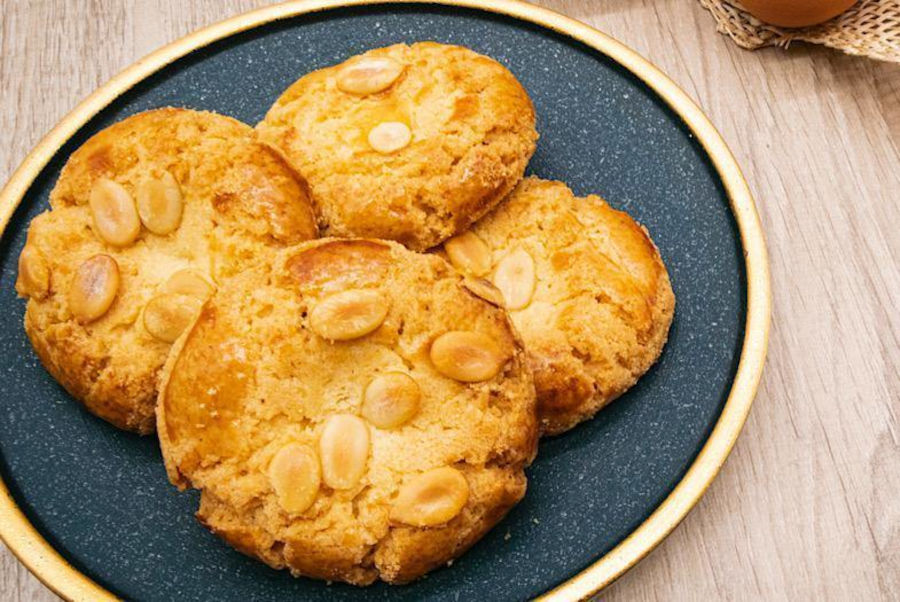
Walnut biscuits have a unique look that resemble the surface of the moon. The pitted, rippling surface also recalls the texture of a walnut, giving the pastry its name. Some bakeries would add in crumbled walnuts to improve their texture. There are two versions of walnut biscuits; one contains their namesake and the other actually contains no nuts. The non-walnut version is usually made with flour, egg, lard, and melon seeds. Butter is a common alternative for the lard, since nowadays more people prefer a healthier version. The resulting biscuits are crispy and nutty.
Red bean pastry (紅豆酥)
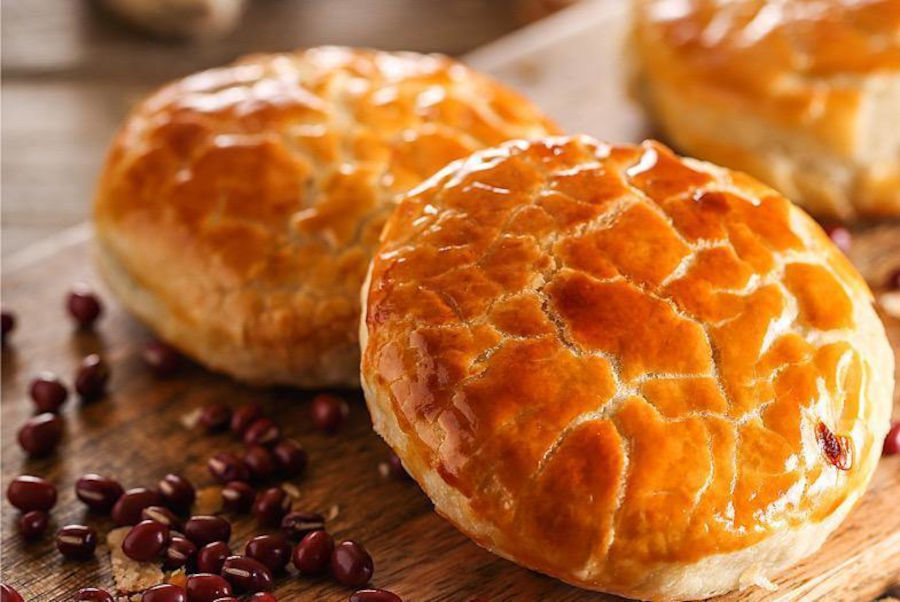
Red bean pastry is a sweet delicacy that can be eaten as a dessert or snack. It is handmade with a fluffy, crisp top and slow-cooked red bean paste as the filling. The traditional red bean pastry is ball-shaped and garnished with black sesame seeds. The alternative version is flatter and the fissured top looks slightly similar to pineapple buns. They both are baked in the oven till light golden brown. Both versions of the red bean pastry smell buttery and have a light sweetness from the red beans. This pastry’s specialty is its balance of soft and crunchy textures.
Chinese shortbread (光酥餅)
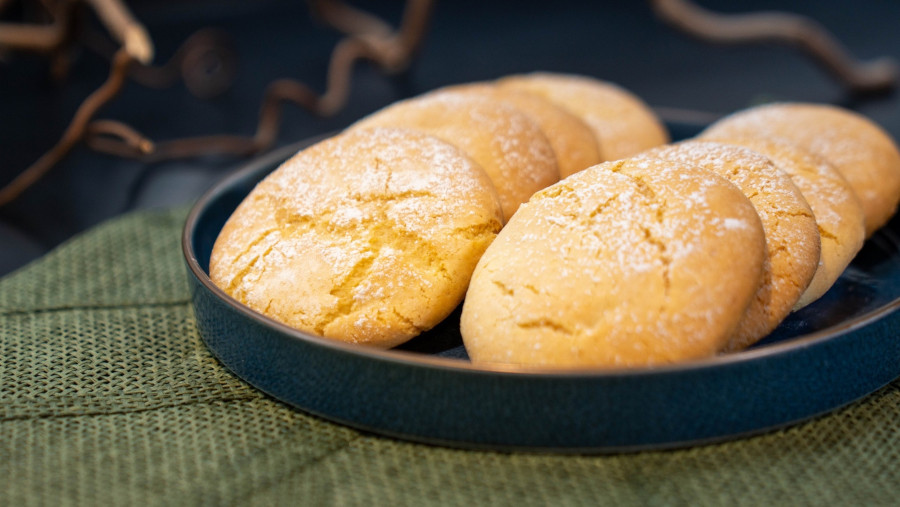
Chinese shortbread are pronounced gwong sou beng in Cantonese, which is a homonym for the city of Jiangsu, China. It is the mini version of xiaoqiao dabing (西樵大餅), a dense bread originating from the Ming dynasty. A chef invented the original using fermented dough, egg, and sugar for a special government official to eat on his way to work. Hong Kong shortbread looks similar, but the texture is different from the original cake. The local version is made with cake flour, white sugar, solid vegetable oil, baking powder and soda, egg, and water, resulting in a light, soft pastry with little cracks on the top that is seen as a traditional, healthy biscuit.
Thousand-year egg pastry (皮蛋酥)
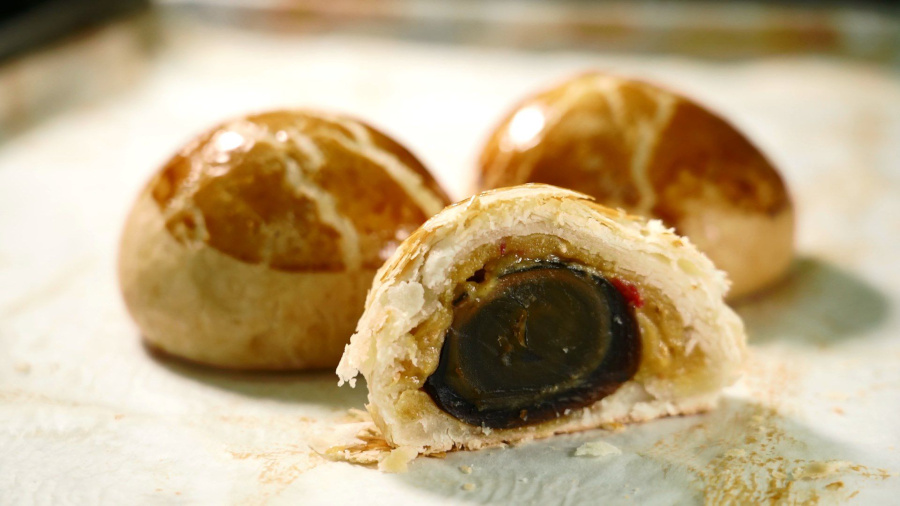
Thousand-year egg pastry is a handmade classic snack. The traditional recipes use a 2:1 ratio for the green bean paste and ginger and contains a whole thousand-year egg in the middle. Lard and cake flour are combined to make a puff pastry first, and then a cake pastry layer is formed using lard, sugar, cake flour, and water. The two layers come together to form the final dough. After a 10 minute rest, the dough is rolled out once more. The thousand-year egg is placed in the centre, wrapped with bean paste mixture, egg-washed twice, and baked in the oven. When it emerges, the pastry is delicate, fluffy, smooth, and complemented by the rich flavor of egg which has slightly melted into the other components.
Pork pastry (雞仔餅)
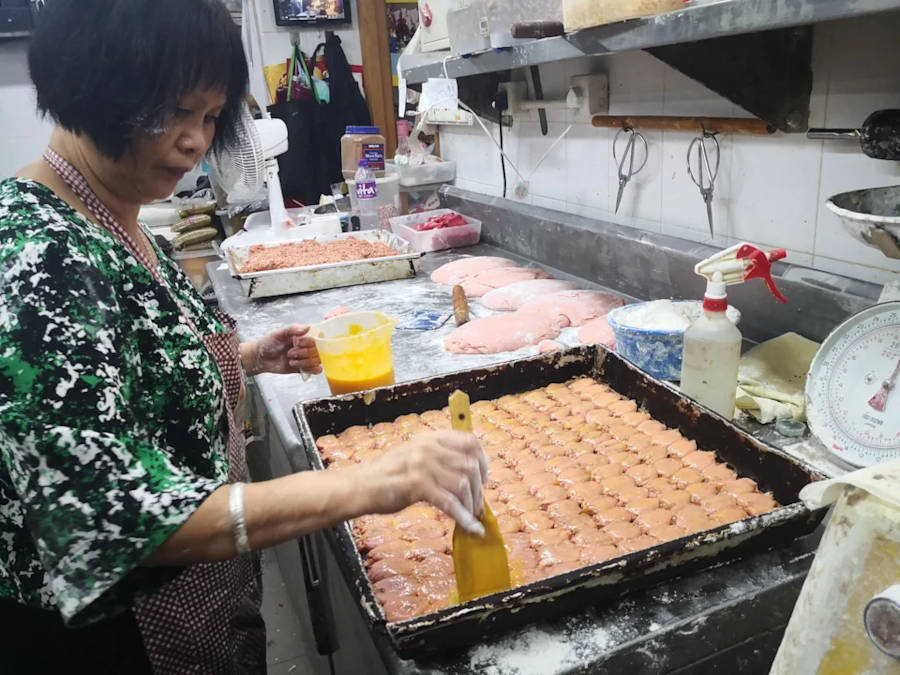
Pork pastry is called gai zai beng, or chicken biscuit in Cantonese. It does not contain chicken, but rather originated from a maid who helped her master create a pastry to serve customers. The pastry was named after her, Xiaofeng, which has a similar meaning to ‘small chicken’. The filling is made by sautéing pickled Chinese mustard, five seeds including peanut, sesame, walnut, almonds, and melon seeds; pork belly, salt, and seasonings together. The filling is wrapped in the pastry dough, flattened, and baked in the oven until crispy. Many flavours and textures are shown off in the cake, with elements of sweet, salty, oily, meaty, and crispy.
Chinese bridal cake (嫁女餅)
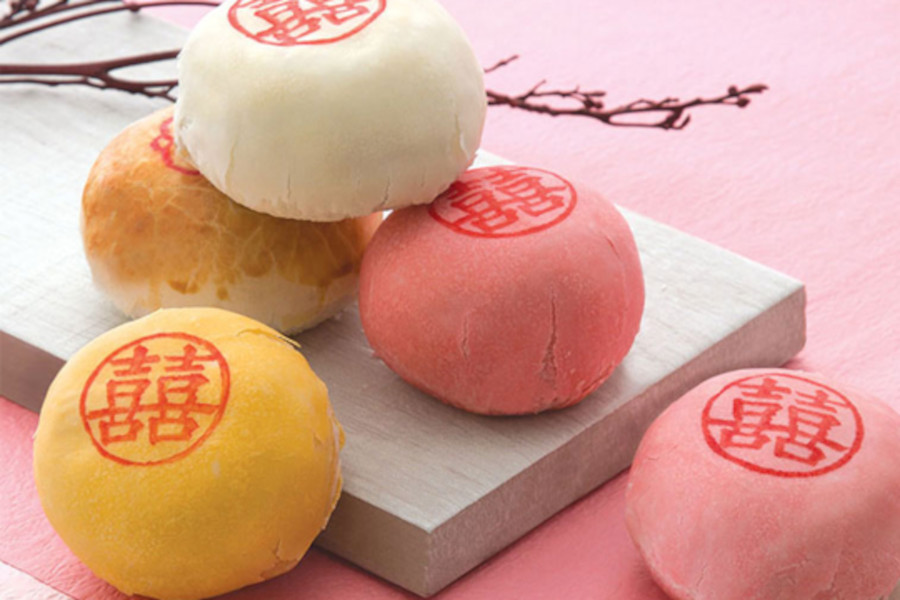
Chinese bridal cakes are part of a tradition in Chinese weddings where the bride’s family sends out a pastry card along with the wedding invitation for her side of family and friends. Guests can use this card to redeem a bridal cake at a bakery, and this exchange has the meaning of sending best wishes to the couple, hoping their happiness and love will last forever. This wedding pastry is made using flour and lard that is chilled into a puff pastry. The red color pastry is flattened first, then wrapped in the puff pastry and rolled for a period of time. The dough is formed into a ball and then filled with lotus seed paste and salty egg yolk. A character which signifies “double happiness” (囍, pronounced hei) is stamped on top of the pastry.


